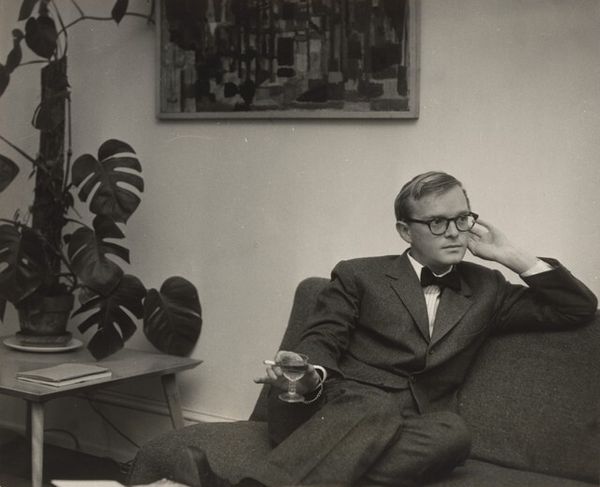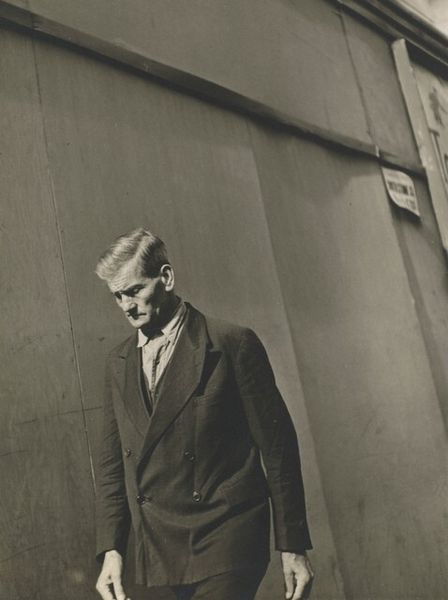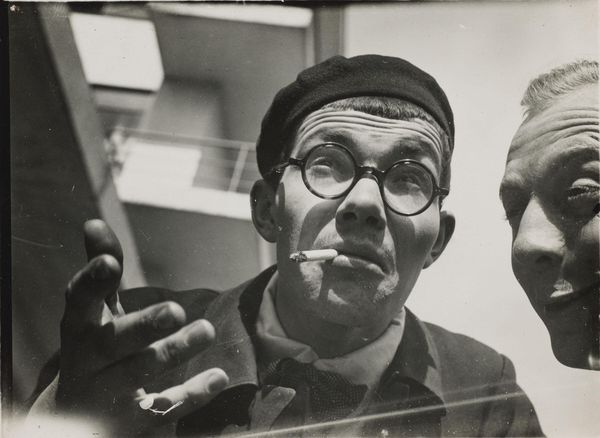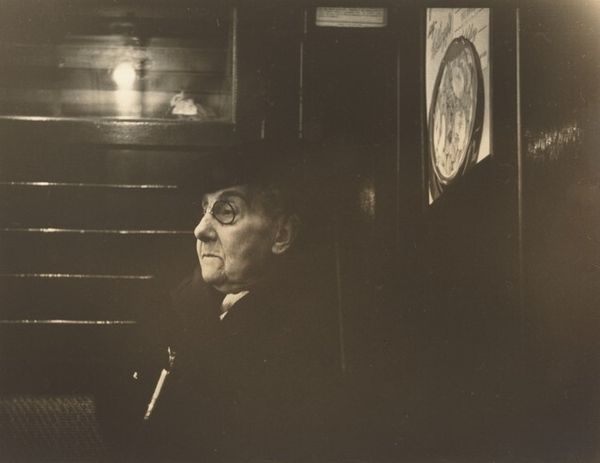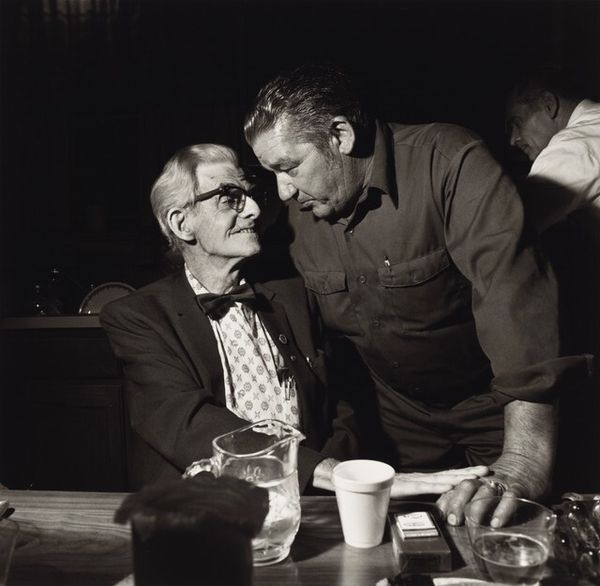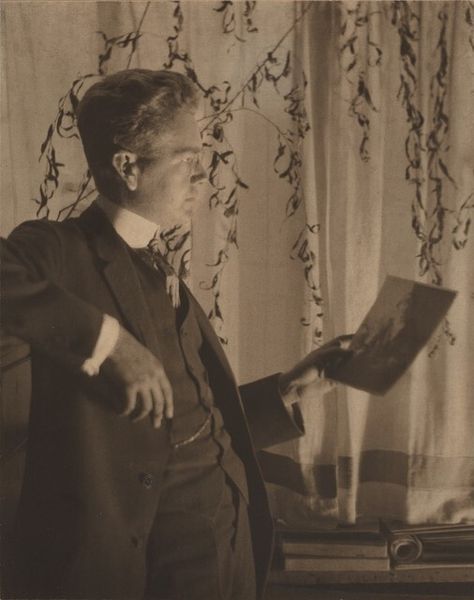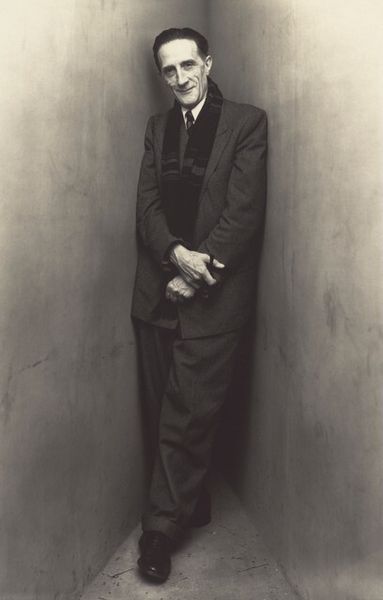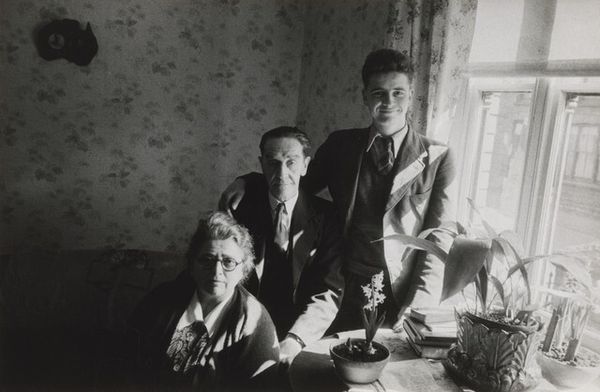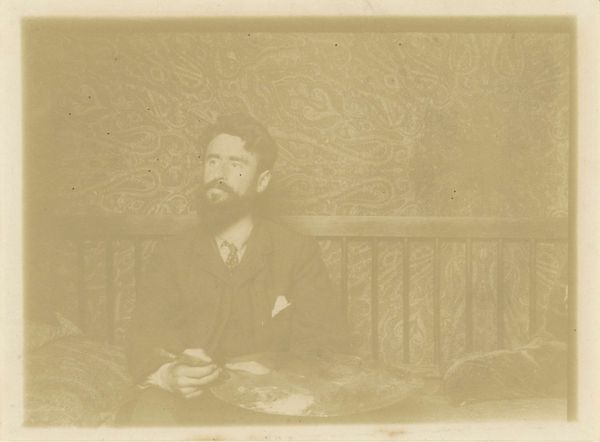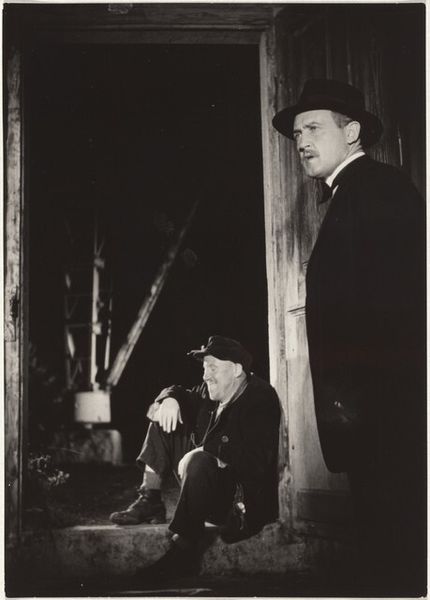
photography, gelatin-silver-print
#
portrait
#
black and white photography
#
photography
#
black and white
#
gelatin-silver-print
#
realism
Dimensions: sheet (trimmed to image): 25.2 x 20.2 cm (9 15/16 x 7 15/16 in.)
Copyright: National Gallery of Art: CC0 1.0
Editor: Here we have Héctor García’s gelatin silver print, “José Clemente Orozco,” created in 1947. It's a pretty stark black and white portrait; the subject looks almost confrontational, sitting in a chair. What do you see in this piece, beyond just a portrait? Curator: It’s more than *just* a portrait, absolutely. Considering the political and social turmoil in post-WWII Mexico, García’s choice to depict Orozco in such a direct, almost defiant manner is striking. Notice the way the light catches his hand, gesturing outwards – it feels like an extension of Orozco's own revolutionary spirit, captured at a pivotal moment in Mexican muralism. Editor: I hadn’t thought about the historical context like that. Is the gesture intentional then? Almost a political statement? Curator: Potentially. Consider Orozco’s murals themselves: powerful statements of social justice and critique of political corruption. García, as a photographer embedded in the cultural scene, would likely have been aware of Orozco’s stance. What if the photograph aims to cement his legacy within those broader dialogues about identity, class, and resistance? Do you see echoes of his mural work in the portrait itself? Editor: I do, now that you mention it! It feels like he’s challenging the viewer, similar to how his murals force a confrontation with uncomfortable truths. Curator: Precisely. García's lens frames Orozco not merely as an individual, but as a symbol – a visual representation of the ongoing struggle for social change within Mexico. And, dare I suggest, the photographic medium allowed to spread this symbol to a wider audience. What do you take away now? Editor: That a seemingly simple portrait can carry a lot of weight and depth when considered alongside history. Thanks, I have so much more appreciation now! Curator: Indeed! These interconnections are crucial in understanding the power of art to reflect, and shape, society.
Comments
No comments
Be the first to comment and join the conversation on the ultimate creative platform.
